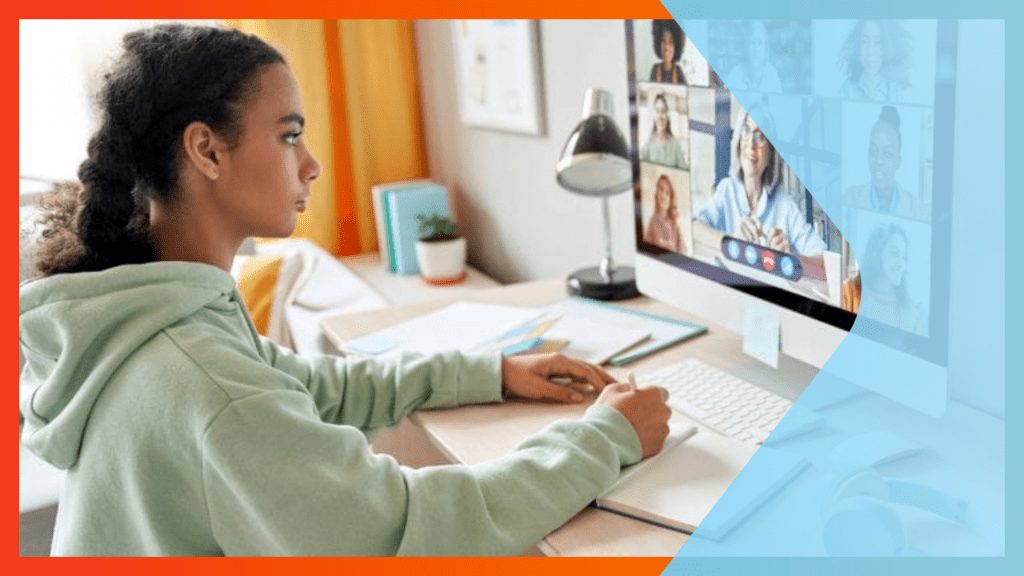Digital Learning Day: Digital Learning Resource Roundup
For Digital Learning Day's 10th Anniversary, Rev compiled a list of resources to make digital learning more effective and accessible.

When the Alliance for Excellent Education (All4Ed) launched Digital Learning Day on Feb. 25, 2011, online learning was far less ubiquitous than it is today. The day was meant to celebrate innovative teachers and explore how technology could enhance learning experiences and outcomes for students.
Now, on Digital Learning Day’s 10-year anniversary, students and learners all over the world are intimately familiar with technology in the classroom. In the last decade, advances in educational technology have made classroom technology a necessity, and as the impacts of the COVID-19 pandemic continue to drag on, online learning has become commonplace.
What is Digital Learning Day?
Digital Learning Day is an ongoing initiative led by All4Ed to engage students and empower educators through the effective use of digital tools. In particular, the day seeks to highlight and recognize forward-thinking educators who use technology in innovative ways to strengthen students’ learning experiences.
Digital Learning Day 2021 is particularly important, because now more than ever, digital learning is not confined to a school or classroom. Learning is mobile and can happen anywhere, whether a student is at home, in the library, or at a local coffee shop. And that learning must be high-quality, customizable, and accessible for every single student.
So, in the spirit of Digital Learning Day, we’ve compiled a list of Rev resources for administrators, educators, and parents exploring ways to make digital learning more accessible, engaging, and effective. Take a look!
Digital Learning Resources
Teaching Strategies and Best Practices
Transitioning to Effective Online Learning: The Playbook
This in-depth eBook gives a comprehensive overview of how to shift to effective online learning. We’ll cover facets of successful remote learning, including best practices around web conferencing, course design, personal connection with students, and improving accessibility with video captioning and transcription.
Zoom K-12 Education Teaching Best Practices
If, like so many, you’re using Zoom to facilitate online learning, it’s important to know best practices to make your classes as safe and engaging as possible. Download the free checklist to make sure you’re ticking all the right boxes.
Teaching Strategies for Online Special Education
Teaching special education online can be very challenging. It requires personalized programs and lesson plans to meet the needs of each student, so that they can learn and thrive. In this article, we go in-depth on teaching strategies for online special education.
Teaching Methods and Strategies for Students with Autism
Teachers and school administrators have a responsibility to provide a welcoming environment for young children with autism. Take a look at some teaching strategies that benefit and support these students.
Teaching Methods and Strategies for Students with Hearing Loss
The National Institute of Deafness or Other Communication Disorders (NICDC) estimates that two-to-three out of every 1,000 kids in the U.S. are born with some form of hearing loss in at least one ear. This presents challenges for both caregivers and educators alike. These key strategies can help empower students who are deaf or hard of hearing.
Teaching Methods and Strategies for Students with Dyslexia
With the right conditions and support, a dyslexic student can excel in school and work. This article details different ways teachers can help dyslexic students, especially in a remote environment.
Accessibility and Engagement
How to Engage Students in Online Learning
This article explores five key elements that will help educators develop an engaging and stimulating online learning experience, improving student learning outcomes.
7 Web Accessibility Resources Every College with Distance Learning Needs
Web accessibility tools provide students with the confidence they need to engage with content they may not have been able to access otherwise. These seven digital resources will make sure that all students learn in an equitable and inclusive fashion.
Captioning How-to Articles
- How to Add Closed Captions & Subtitles to Kaltura Online Course Videos
- How to Add Closed Captions & Subtitles to Panopto Videos
- How to Add Closed Captions & Subtitles to Udemy Online Course Videos
- How to Add Closed Captions & Subtitles to Teachable Online Course Videos
- How to Add Closed Captions & Subtitles to Videos in Moodle
Subscribe to The Rev Blog
Sign up to get Rev content delivered straight to your inbox.



